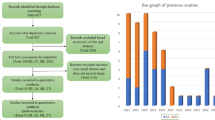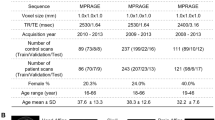Abstract
Schizophrenia is a mental disease with a great number of clinical manifestations that makes diagnosis a great challenge. Until a correct diagnosis is attained, the patient experiments mental suffering that can lead to social conflicts, involuntary accidents, and suicides. Early diagnosis, despite the clinical complexity, is therefore of utmost importance, and several recent studies focus on analyzing structural brain modifications that have been correlated to schizophrenia, and that can be detected in anatomical magnetic resonance images. Previous research applying machine learning to such images presented promising results. However, the scope was limited to analyzing only one or few slices of the brain while not using recent algorithms at the core of the classifiers. This can lead to information loss due to sub-optimal features extraction. In this study we created machine learning models based on Convolutional Neural Networks, and evaluated the best training parameters based on a data set of magnetic resonance images from persons with schizophrenia and from a control group. We analyzed the performance of the classifiers, first trained with individual slices of the brain and later with different combinations of multiple magnetic resonance slices. Our results suggest that it is possible to increase the performance metrics such as accuracy, sensibility, and precision of a classifier from approximately 50% when trained with a single slice, to over 80% when trained with a properly selected combination of slices.
Access this chapter
Tax calculation will be finalised at checkout
Purchases are for personal use only
Similar content being viewed by others
References
Flores G, Morales-Medina JC, Diaz A (2016) Neuronal and brain morphological changes in animal models of schizophrenia. Behav Brain Res, 190–203
Michalakis G, Pavlou M, Gerogiannis G et al (2020) Another day at the office: visuohaptic schizophrenia VR simulation. In: 2020 IEEE conference on virtual reality and 3D user interfaces abstracts and Ws (VRW), 515–516
Harrison PJ (1999) The neuropathology of schizophrenia: a critical review of the data and their interpretation. Brain 122:593–624
Vergara RF (2019) Detecção de alterações cerebrais anatômicas associadas á esquizofrenia com base em redes convolucionais aplicadas a imagens de ressonância magnética. Master’s thesis. University of Brasília at Gama
Cruz BF (2016) Classificação de esquizofrenia com base em máquinas de suporte vetorial aplicadas a características de imagens de ressonância magnética. Master’s thesis. University of Brasília at Gama
Oh J, Oh B, Lee K et al (2020) Identifying schizophrenia using structural mri with a deep learning algorithm. Front Psychiatry 11:16
Niu Y, Lin Q, Qiu Y et al (2019) Sample augmentation for classification of schizophrenia patients and healthy controls using ICA of fMRI data and convolutional neural networks. In: 2019 tenth international conference on intelligent control and information processing (ICICIP), pp 297–302
Sumner PJ, Bell IH, Rossell SL (2018) A systematic review of the structural neuroimaging correlates of thought disorder. Neurosci Biobehav Rev, 299–315
Association. American Psychiatric, Association (2013) American Psychiatric. Diagnostic and statistical manual of mental disorders : DSM-5. American Psychiatric Association Arlington, VA5th ed
Bryan RN (2009) Introduction to the science of medical imaging
LeCun Y, Bengio Y, Hinton G (2015) Deep learning. Nature 521:436–444
The Biomedical Informatics Research Network (BIRN). NeuroImaging tools and resources collaboratory (NITRC) website. Available at https://www.nitrc.org/projects/birn/
Keator DB, Grethe JS, Marcus D et al (2008) A national human neuroimaging collaboratory enabled by the biomedical informatics research network (BIRN). IEEE Trans Inf Technol Biomed 12:162–172
Abadi M, Agarwal A, Barham P et al (2015) TensorFlow: large-scale machine learning on heterogeneous systems. Software available from tensorflow.org
Keras CF (2015) https://keras.io
Kohavi R (1995) A study of cross-validation and bootstrap for accuracy estimation and model selection. In: Proceedings of the Fourteenth International Joint Conference on Artificial Intelligence International Conference Emerging Trends Computer Electronics Engineering (ICETCEE 2012)
Author information
Authors and Affiliations
Corresponding author
Editor information
Editors and Affiliations
Ethics declarations
The authors declare that they have no conflict of interest.
Rights and permissions
Copyright information
© 2022 Springer Nature Switzerland AG
About this paper
Cite this paper
Avelar Filho, J.S., Silva, N., Miosso, C.J. (2022). Detection of Schizophrenia Based on Brain Structural Analysis, Using Machine Learning over Different Combinations of Multi-slice Magnetic Resonance Images. In: Bastos-Filho, T.F., de Oliveira Caldeira, E.M., Frizera-Neto, A. (eds) XXVII Brazilian Congress on Biomedical Engineering. CBEB 2020. IFMBE Proceedings, vol 83. Springer, Cham. https://doi.org/10.1007/978-3-030-70601-2_298
Download citation
DOI: https://doi.org/10.1007/978-3-030-70601-2_298
Published:
Publisher Name: Springer, Cham
Print ISBN: 978-3-030-70600-5
Online ISBN: 978-3-030-70601-2
eBook Packages: EngineeringEngineering (R0)




